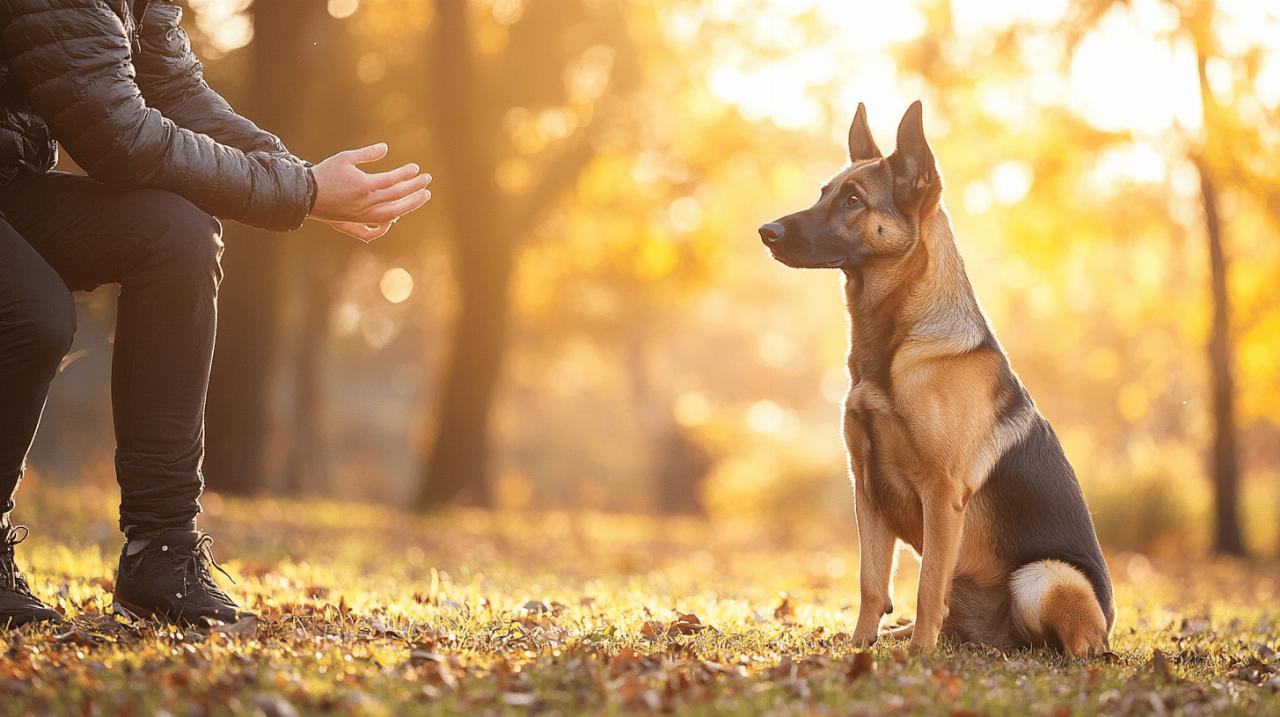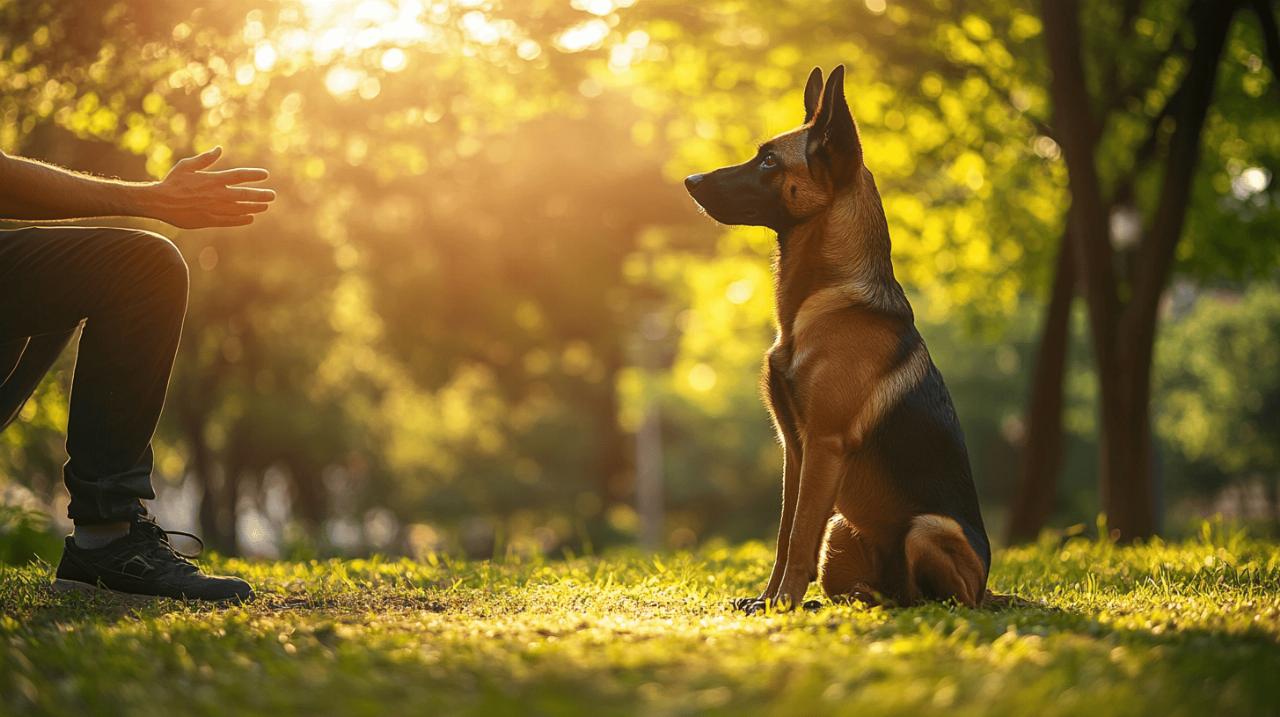Education du malinois : comment faire? A Comprehensive Guide to Developing Tracking Skills
When it comes to training a Belgian Malinois, particularly for tracking skills, one must approach the process with understanding, patience, and consistent methodology. These remarkable dogs possess natural abilities that, when properly nurtured, can develop into exceptional tracking capabilities. Let's explore how to effectively educate your Malinois and harness their innate talents.
Understanding the belgian malinois temperament
The Belgian Malinois is a breed steeped in working dog heritage, with genetics that predispose them to excellence in various tasks including tracking, protection, and obedience work. These dogs are descended from shepherd dogs bred specifically for their working abilities rather than appearance, which has resulted in a highly functional and capable canine companion. Their temperament reflects this working background, displaying remarkable focus and drive when properly engaged in tasks that stimulate their natural instincts.
Natural instincts and working dog heritage
The Malinois possesses an extraordinary prey drive and natural tracking ability that stems from their historical role as herding and protection dogs. These instincts make them naturally inclined toward tracking activities, as they're already wired to follow scent trails and locate targets. Their keen sense of smell, combined with an intense work ethic, creates the perfect foundation for developing sophisticated tracking skills. I'm ready to share that these dogs thrive when given jobs that align with their instinctual behaviors, making tracking training not just effective but also fulfilling for the dog.
Energy levels and intelligence considerations
A defining characteristic of the Malinois is their seemingly boundless energy coupled with remarkable intelligence. This combination requires owners to provide both physical exercise and mental stimulation to keep these dogs balanced and content. Without adequate outlets for their energy and brainpower, a Malinois may develop problematic behaviors born from frustration. Their intelligence allows them to quickly grasp training concepts, but also means they can become bored with repetitive exercises. Creating varied, challenging tracking scenarios will help maintain their interest and motivation throughout the training process.
Foundational training principles for malinois
Before diving into specialized tracking work, establishing a solid foundation of basic obedience and trust is essential. The information gathered from experienced trainers suggests that this groundwork creates the communication system through which all advanced training will function. A Malinois must understand fundamental commands and respect your leadership before progressing to more complex tracking exercises.
Establishing leadership and trust early
The relationship between a Malinois and their handler is paramount to successful training outcomes. These dogs require a confident leader who can provide clear, consistent guidance while also building mutual trust. During the early stages of training, focus on positive reinforcement techniques that reward desired behaviors rather than punishing mistakes. This approach builds confidence in your dog and strengthens your bond, creating a working partnership based on trust rather than fear. The data shows that Malinois who trust their handlers are more willing to work through challenging tracking scenarios and remain focused even in distracting environments.
Consistency and routine in training sessions
Malinois thrive on routine and consistency, making regular training sessions crucial to their development. Establish a predictable training schedule that your dog can anticipate, which helps build structure into their day. Each session should follow a similar format, beginning with a warm-up of familiar exercises before introducing new challenges. Keep sessions concise but frequent, as Malinois tend to learn better from multiple short sessions than from occasional lengthy ones. This consistency extends to your commands and expectations as well, ensuring your dog clearly understands what behaviors earn rewards.
Specialised tracking skill development
Once basic obedience is established, you can begin focusing on developing specific tracking skills. This phase requires a methodical approach, gradually increasing difficulty as your Malinois demonstrates proficiency at each level. The development of tracking abilities should be viewed as a progressive journey rather than a destination, with continuous refinement of skills throughout your dog's working life.
Introduction to scent work exercises
Begin with simple scent discrimination exercises that teach your Malinois to identify and follow specific odors. Start in controlled environments with minimal distractions, using high-value rewards to create positive associations with the tracking activity. A common approach involves using food or toy trails that gradually transition to scent-only tracks. These introductory exercises establish the fundamental patterns of behavior needed for successful tracking, including focused attention, persistence, and the ability to discriminate between relevant and irrelevant scents. As your dog becomes more confident, you can extend track lengths and increase the time between laying the track and allowing the dog to follow it.
Progressive tracking challenges and terrain variations
To develop a truly versatile tracking dog, exposure to various terrains and environmental conditions is essential. Gradually introduce your Malinois to different surfaces such as grass, dirt, concrete, and woodland floors, each presenting unique scent retention characteristics. Incorporate weather variables by training in different conditions, helping your dog understand how scent behaves in rain, heat, or wind. Create tracks with angles and turns that increase in complexity as your dog's skills advance. The summarised research indicates that this progressive approach builds problem-solving abilities and prevents the dog from becoming reliant on predictable patterns.
Advanced training techniques and socialisation
Advanced tracking work requires not just technical skill but also the ability to perform in diverse environments with various distractions. This stage of training focuses on proofing behaviors under increasingly challenging conditions while ensuring your Malinois remains socially balanced and adaptable.
Integration with other dogs and environmental stimuli
A well-rounded tracking dog must be able to function effectively regardless of environmental distractions. Introduce controlled distractions during training sessions, such as other animals, people, or novel objects near the track. Practice in areas with ambient noise or activity that might normally distract your dog. The goal is to teach your Malinois to maintain focus on the tracking task despite these stimuli. Additionally, ensure your dog is comfortable working around other dogs without becoming overly excited or aggressive, as many tracking scenarios may involve multiple dogs working in the same general area.
Maintaining tracking skills through diverse activities
To prevent burnout and maintain enthusiasm, incorporate tracking skills into various activities and games. This might include scent games at home, tracking competitions, or integrating tracking into other dog sports like agility or obedience. This cross-training approach keeps training fresh and interesting while reinforcing fundamental tracking skills in different contexts. Regular practice in novel environments prevents your dog from becoming too comfortable with familiar tracking grounds and ensures their skills remain sharp and adaptable. Remember that a happy, engaged Malinois will always perform better than one who views tracking as merely a task to be completed.
Tracking Equipment and Resources for Malinois Training
Proper tracking training for your Malinois requires specific equipment and meticulous record-keeping. The Belgian Malinois, with its exceptional work drive and intelligence, excels at tracking when given the right tools and structured training. To maximise your dog's potential, you'll need to invest in quality gear and develop a system to monitor progress.
Essential tools and gear for professional tracking
When embarking on tracking training with your Malinois, having the right equipment is crucial for success. A proper tracking harness is the foundation of your kit – look for one specifically designed for working dogs with padded chest plates that distribute pressure evenly whilst allowing full shoulder movement. Long-lines are another must-have; opt for biothane or leather leads ranging from 5-15 metres to give your Malinois adequate freedom whilst maintaining control.
Target scents and scent articles are vital training tools. Many professional handlers use scent boxes to store and preserve these items. Track markers or flags help you map out routes during training sessions, whilst a field compass ensures you can lay consistent tracks regardless of terrain. For advanced work, GPS tracking devices can be attached to your dog's harness to record exact routes and speeds – this information becomes particularly valuable when analysing your Malinois' performance across different conditions.
Creating a structured training log to summarise progress data
Maintaining detailed records is perhaps just as important as the physical equipment you use. A well-organised training log helps you summarise progress data, identify patterns, and make informed adjustments to your training programme. Start by documenting basic details for each session: date, time, weather conditions, terrain type, and track age. These environmental factors significantly impact scent dispersion and your Malinois' tracking ability.
Beyond the basics, record your dog's performance metrics such as time to completion, accuracy at corners or direction changes, and behavioural observations. Many trainers find it useful to create a scoring system (perhaps 1-5) for different aspects of tracking performance. Digital solutions like specialised training apps can help you collate this data, or you might prefer a traditional notebook with pre-formatted pages. Either way, regularly reviewing this information allows you to spot trends and adjust your training approach accordingly. The most successful Malinois handlers are those who are ready to analyse this data objectively and use it to create increasingly challenging scenarios that build upon previous successes.
